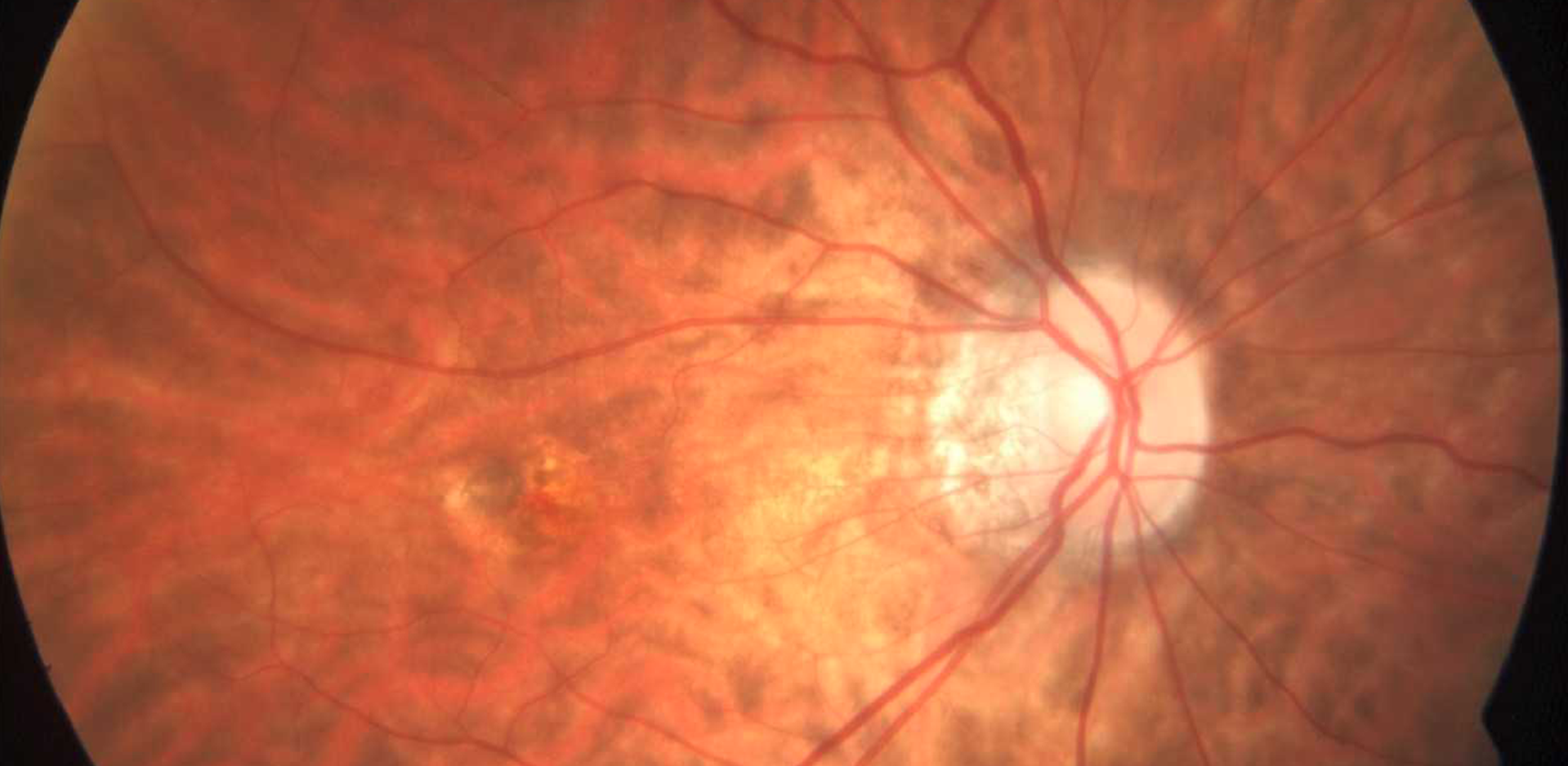Aim: To present the case of a patient with myopic choroidal neovascular membrane (mCNV) in the 3rd trimester of pregnancy, who was treated with intravitreal ranibizumab.
Case Report: The 34-year-old patient was referred to the Department of Ophthalmology of the University Hospital Kralovske Vinohrady in January 2020 for mCNV on her right eye (RE). The patient was in the 34th week of pregnancy. Initial best corrected visual acuity (BCVA) was 68 ETDRS letters. Spherical equivalent of the RE was -11.5 dioptres, axial length of the RE was 27.7 mm. Pigmented CNV with small haemorrhage was present on the retina of the RE. Optical coherence tomography (OCT) of the RE showed a hyperreflective mass above the retinal pigment epithelium, central retinal thickness (CRT) was 310 µm. OCT angiography confirmed the presence of a classic CNV in the macula of the RE. Two weeks later, the hyperreflective lesion and oedema in the macula of the RE increased, the CRT was 329 µm, BCVA remained stable. After discussion with the patient and the treating gynaecologist, intravitreal ranibizumab was administered in the RE in the 36th week of pregnancy. On check-up 3 weeks later, we observed the decrease of macular oedema to 276 µm and the improvement of BCVA to 78 ETDRS letters. The patient delivered a healthy baby girl in the 39th week of pregnancy via caesarean section, postnatal adaptation of the newborn was normal. During further visits, the BCVA improved to 83 ETDRS letters and the macular oedema disappeared completely. 8 months after the first ranibizumab injection, the CNV reactivated, BCVA decreased to 72 ETDRS letters, oedema was present in the macula and the CRT was 309 µm. Another ranibizumab was administered into the RE. The patient then discovered that she was pregnant; according to calculations, she was in the 3rd week of pregnancy at the time of the second ranibizumab injection. After the second injection, BCVA improved to 79 ETDRS letters, macular oedema on the OCT disappeared and CRT decreased to 264 µm. The pregnancy was terminated per patient’s request.
Conclusion: Intravitreal administration of ranibizumab in the 3rd trimester of pregnancy led to the improvement of BCVA and decrease of macular oedema in the patient with mCNV. The injection had no adverse effect on the pregnancy or the postnatal adaptation of the newborn. However, it is always necessary to consider the risk/benefit ratio when administering intravitreal antiVEGF drugs in pregnant patients. Thorough discussion with the patient is necessary.

